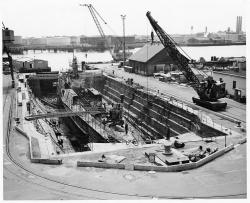Most great monuments of nineteenth-century American engineering, such as the Brooklyn Bridge, dominate the surrounding landscape. By contrast, the Hoosac Tunnel, dug through a mountain in western Massachusetts, is inconspicuous, as tunnels naturally are. Yet it stands in the front rank of the projects of its age by whatever standards of measurement one chooses. On the one hand, its construction, which began in 1851 and ended in 1875, took almost two hundred lives, damaged many reputations, and nearly claimed the solvency of the commonwealth of Massachusetts.
Baldwin, Loammi
While the Erie Canal has become well-known in the annals of American history, the Middlesex Canal, built two decades earlier and a model for canal engineers throughout young America, has only recently become recognized for its important achievements. Extending 27 miles northeast from Boston harbor to the Merrimack River near present-day Lowell, Masachusetts, the Middlesex Canal provided low-cost and efficient freight transport for almost five decades, helping to establish the canal in the U.S. as a viable means of economic development.

Innovations

While the Erie Canal has become well-known in the annals of American history, the Middlesex Canal, built two decades earlier and a model for canal engineers throughout young America, has only recently become recognized for its important achievements. Extending 27 miles northeast from Boston…
Read More

